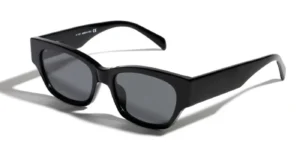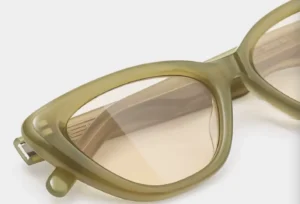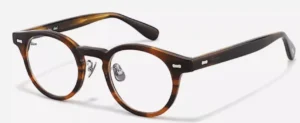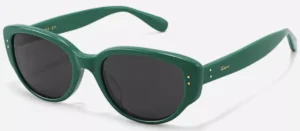Sunglasses are a kind of vision protection product to prevent damage to human eyes caused by solid sunlight stimulation. They are also a fashion or unique decoration that reflects personal style.So it is very important to master Sunglasses Test Methods and Standards Introduction
The protective and decorative functions of sunglasses make people keen to use them, but because they directly affect personal safety when used, their quality requirements are exceptionally high.
From the perspective of inspection, QC partners need to know how to test the quality of sunglasses. In this article, iDetail sunglasses manufacturers will briefly introduce the testing methods and standards for sunglasses.
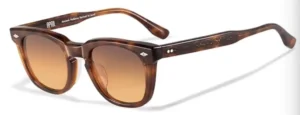
1. Sunglasses Quality Inspection Rules
A pair of sunglasses plays an important role outdoors under strong sunlight. Qualified sunglasses should have a sunglasses inspection report.
Judging the quality of sunglasses can be viewed from two aspects: quality and aesthetics. Aesthetics have a personal element, while quality has a certain standard. The quality of sunglasses mainly refers to the quality of the lenses.
At present, the common standard in the world is the standard of the US Food and Drug Administration (F·D·A).
(1). According to F·D·A standards, lenses must filter out more than 90% of ultraviolet rays in the sun while ensuring light transmittance. The lenses should be labeled with “UV-100PROTCT10N”. When 100% of ultraviolet rays are filtered out, the lens should be labeled with “UV-100PROTCT10N”. “UV-400PROTCT10N” label, so it is very important to check the UV label on the lens.
(2). The lens cannot have the “degree” that optical lenses have. Generally, if the diopter exceeds 15%, you will feel dizzy when wearing it.
(3). The lens must have high strength and pass the impact resistance test. Generally speaking, the strength of plastic sheets (propionic acid or cellulose acetate), resin sheets, and glass sheets increases from small to large.
1.1 How to choose sunglasses that suit you?
People who often ride bicycles are best to wear resin sunglasses; when exercising, wear sports sunglasses with larger frame curvature or add a belt or chain; people with short-sightedness or far-sightedness can wear sunglass clips or special optical sunglasses.
In spring and autumn, choose sunglasses with lighter lenses and solid frame colors; in winter, choose brighter frame colors, wear sports sunglasses with color film in snowy weather, and in winter, choose sunglasses with slightly larger frames to protect against wind.
The price of a pair of sunglasses may vary greatly due to differences in brand, material, packaging, style, color, and publicity. Consumers should fully consider manufacturing costs, sales services, and other aspects. The quality of $6 sunglasses is often not guaranteed. Going to a larger optical store or an optical counter in a large shopping mall can generally ensure that the product has been better guaranteed in terms of quality inspection and health inspection.
2. Sunglasses test method
Sunglasses belong to the category of individual eye and face protective equipment. The technical indicators to measure their quality are mainly reflected in several aspects such as vertex focus, UV protection, mechanical impact resistance, and whether they can block dazzling glare. The following should be paid attention to during testing:
2.1. Lens UV transmittance detection principle
The transmittance measurement of sunglasses lenses cannot be treated as a simple average of the spectral transmittance at each wavelength but should be obtained by weighted integration of the spectral transmittance according to the different weights of different wavelengths.
The human eyeball is a simple optical system. When assessing the quality of eyewear products, we must first consider the sensitivity of the human eye to light radiation of different wavelengths.
In short, the human eye is sensitive to green light, so the transmittance of the green light band has a great impact on the light transmittance of the lens, that is, the green light band has a greater weight;
On the contrary, since the human eye is insensitive to purple and red light, the transmittance of purple and red light has a relatively small impact on the light transmittance of the lens, that is, the weight of the purple and red light bands is also relatively small.
An effective method for testing the UV protection performance of lenses is to quantitatively measure and analyze the UVA and UVB spectral transmittance parts.
2.2 Testing instruments and methods
A spectral transmittance tester can be used to measure the spectral transmittance of sunglasses in the ultraviolet region to determine the quality of the sample’s ultraviolet transmission performance.
Connect the spectral transmittance meter to the computer serial port, start the operating program, perform environmental calibration at 23℃±5℃ (must confirm that there are no lenses or filters in the measurement part before calibration), and set the test wavelength range to 280~480nm. , observe the ultraviolet rays of the lens with the transmittance curve magnified.
Finally, place the tested lenses on the test rubber stoppers to test the light transmittance (note: wipe the lens and the test rubber stoppers clean before testing).
2.3 Problems in Sunglasses Testing
In the detection of sunglasses, the transmittance calculation in the ultraviolet band adopts a simple average method of spectral transmittance and is defined as the average transmittance. For the same measured sample, if the two definitions of QB2457 and ISO8980-3 are used for measurement, the UV band transmittance results obtained are completely different.
When measured according to the definition of ISO8980-3, the calculated transmittance result in the UV-B band is 60.7%; and when measured according to the definition of QB2457, the calculated result of the transmittance in the UV-B band is 47.1%. The results differed by 13.6%.
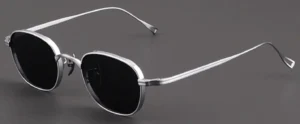
It can be seen that differences in reference standards will directly lead to differences in technical requirements, ultimately affecting the accuracy and objectivity of measurement results. When measuring the transmittance of eyewear products, this issue cannot be ignored.
Inspect and analyze the transmittance of sunglasses products and lens materials. Accurate values can be obtained by weighted integration of the spectral transmittance, and the results of the pros and cons of sunglasses products can be obtained. First of all, it depends on whether the material of the lens can block ultraviolet rays UVA and UVB, and allow more visible light to pass through to achieve anti-glare function.
Experiments have proven that resin lenses have the best transmission performance, followed by glass lenses, and crystal lenses are the worst. Among resin lenses, the transmission performance of CR-39 lenses is far better than PMMA.
3. Sunglasses export testing project requirements
3.1 Introduction of sunglasses testing
As a kind of human eye protection product, the quality requirements of sunglasses products mainly include:
① Technical indicators such as spectral performance, optical power, prism power, surface texture, flame retardancy, and mechanical strength of the product.
② The possibility of eye injury due to sharp debris produced by lens rupture.
The nickel content in the surface coating of metal frames is harmful to the human body.
In order to prevent sunglasses wearers from danger, countries around the world have formulated relevant quality standards for testing sunglasses. Europe has EN 1836, the United States has ANSI Z80.3, and Australia has AS/NZS
1067, my country has standard QB2457.
Sunglasses are regarded as medical devices in the United States, and their quality must comply with the U.S. Federal Food and Drug Administration (FDA). Imports are allowed only in accordance with the regulations of the FDA.
The EU regards sunglasses as personal protective devices and their quality must comply with the EU Personal Protective Devices Directive 89/696 Only if the products meet the requirements and are certified and certified can they successfully enter the EU market by adding the “CE” mark.
3.2. Spectral Performance Of Sunglasses Test
(1) Visible spectrum region transmittance and classification
The visible spectrum is a band ranging from 380 to 780nm, which can be felt by human vision. The transmittance of sunglasses refers to the ratio of the radiant energy projected and transmitted through the object to the total radiant energy projected onto the object when the solar light flux leaves from the illuminated surface or medium incident surface to the other surface.
The transmittance is closely related to the thickness and structure of the substance, the wavelength of light, emission, scattering, temperature changes, etc. Transmittance + reflectivity = 1, absorptivity = 1-R-T. People distinguish and classify sunglasses according to the different transmittances of the visible spectrum.
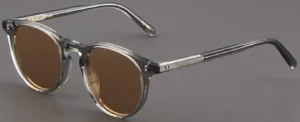
Countries have certain differences in the classification of sunglasses. The American ANSIZ80.3 divides sunglasses into four categories: light-colored sunglasses, sunglasses, special-purpose sunglasses, and dark-use sunglasses.
Europe’s ENl836 and Australia’s AS/NZs1067 divide sunglasses into 5 categories, Category 0, Category 1, Category 2, Category 3, and Category 4. My country’s GBl0810.3 divides sunglasses into 4 categories, Category 1, Category 2, Category 3, and Category 4.
(2) Transmittance in ultraviolet spectral region
(2.1) Transmittance requirements
Ultraviolet spectral transmittance refers to the allowable transmittance of human sunglasses in the ultraviolet spectrum region. The quality of this indicator is directly related to the problem of irritation and damage to human eyes caused by ultraviolet rays from the sun. Relevant standards in various countries all regulate UVA and UVB bands. transmittance is limited.
(2.2) Lens UV protection ability test
⑴ Principle: Simulate light irradiation on the horizontal convex surface of the lens, measure the intensity of light passing through the lens, and determine the ability to protect against ultraviolet rays.
⑵ Plan: Mass production of lenses shall be in accordance with GB2828, using general inspection levels and normal sampling at one time.
(3) Steps:
① Open the inspection compartment cover of the spectrum analyzer at room temperature, place the test lens in the lens holder, and close the cover.
② The spectrum analyzer outputs curves of the wavelength and transmittance of the lens under test through the computer and printer.
Result: UVB 280nm- 315nm:
(2.3) Requirements for different uses
Sunglasses used for traveling and driving must meet the two requirements of spectral transmittance and traffic light recognition. The light transmittance requirements for special glasses such as photochromic sunglasses, gradient-tinted sunglasses, polarized sunglasses, etc. are basically the same in national standards.
3.3 Optical power and prism power
The focal power is equal to the difference between the convergence degree of the image beam and the object beam convergence, which characterizes the ability of the optical system to deflect light. Generally, optical power is expressed as the reciprocal of the image-side focal length.
Prism refers to the deviation of light after passing through a specific point on the lens. Europe’s ENl836:2005 divides sunglasses into two levels. Different levels have different requirements for power and prism.
Mounted lenses and unmounted binocular integrated lenses Level L: The tolerance in the horizontal direction is 0.25cm/m (base inward) to 0.75cm/m (base outward), and the tolerance in the vertical direction is 0.25cm/m.
Level 2: Horizontal tolerance: 0.25 cm/m (base inward) ~ 1.00cm/m (base outward), vertical tolerance: 0.25 cm/m.
0.25△, the distance between the two lenses cannot exceed 0.50△. Horizontal tolerance: O.25 cm/m (base inward) ~ 1.00cm/m (base outward)
Note: The unit D is equivalent to m-1, and the unit Δ is equivalent to cm/m.
3.4 Material and Surface Quality
Countries have certain requirements for the surface quality of sunglasses, but the descriptions are slightly different.
To summarize the requirements of various countries, the brief statement is as follows: Inspection is carried out in light and dark backgrounds without the aid of optical magnification devices to identify whether there are bubbles, scratches, impurities, mildew, scratches, stains, blisters, cracks and other quality in the central area of the lens. question.
3.5 Flame retardancy
The test methods for flame retardancy in European Standard EN 1836, Australian Standard AS/Nzs 1067 and Chinese Standard QB2457 are the same, as follows:
Use a steel rod heated to (650±20)°C to keep it on the sample for (5±0.5)s and then remove it to observe whether the sample continues to burn. In ANSIZ80.3, the sample is placed in an environment of (200±5)°C for (15±1)min to observe whether the sample will burn. These two methods seem to be very different, but they are essentially exploring whether the sample will burn under high-temperature conditions.
3.6 Mechanical strength
There are currently three experimental methods for testing the mechanical strength of lenses, impact resistance test, extrusion test, and nose bridge deformation.
(1) Shock resistance test
(1.1) Principle Purpose: The steel ball is dropped directly on the horizontal convex surface of the lens to test the endurance and toughness of the lens of the sunglasses, so as to obtain the mechanical strength of the sunglasses.
(1.2) Supports: The human head models or supports made of hard materials equivalent to medium stature, the total weight of the base plate and solid attachments shall not be less than 12.25kg.
(1.3) Throwing weight: about 16.1g, not less than 15.9g, a steel ball with a diameter of 16mm.
(1.4) Steps:
⑴ Wear the test glasses on the human head model or support at room temperature in the same way as normal wearing.
⑵ Steel ball from 1.27m
The height is freely dropped into the horizontal convex or outer end surface of the lens and the ball will impact within a 16mm diameter circle located at the geometric center of the lens. The ball may be directed, but not limited, through a tube extending to within about 102 mm of the test lens as it descends.
(1.5) Test results:
If the test lens breaks through its entire thickness, or when it splits into two or more lobes across a complete diameter, or when any piece of lens material, visible to the naked eye, becomes fragmented from the visual surface with more than 30 mg of debris Detachment of the test ball or concavity, or passage of the test ball through the lens, will be considered a break.
Mechanical strength is required in this standard, but the mandatory requirements are different. QB2457, As/NZs1067 and ANSIZ80.3 are mandatory requirements, while ENl836 is an optional requirement.
(2) Extrusion experiment
The two standards of ENl836 and AS/Nzs1067 require that the lens should withstand a steel ball with a diameter of 22mm, a speed of no more than 400mm/mm, and a load of 100±2 Newtons. The lens should not be broken or deformed. However, there is no such provision in QB2457 and ANSIZ80.3.
(3) Nose bridge deformation experiment
After being subjected to the pressure of the nose bridge deformation testing machine, the deformation percentage between the geometric center distance of the frame and its original state shall not exceed ±2%, and the lens will not fall out of the frame.
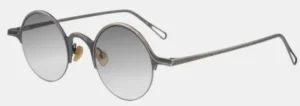
As a fashionable vision protection ornament, sunglasses have a large export market. However, various countries have many and high requirements and strict specifications for sunglasses to protect them from ultraviolet rays and prevent damage to people. We need to comply with these requirements and Once certified and qualified, a mark must be added to have a chance, which deserves special attention.
So it is very important to master the testing of sunglasses, which is crucial for custom sunglasses manufacturers, designing sunglasses and how to create your own sunglasses brand.
